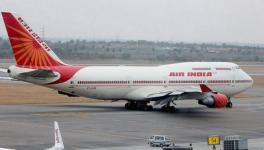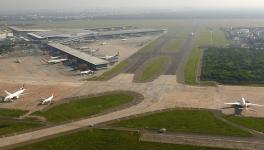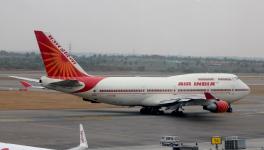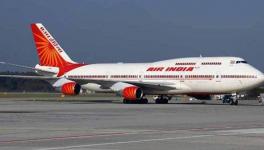Air India Crash Report: Why The Push For Pilot Error?
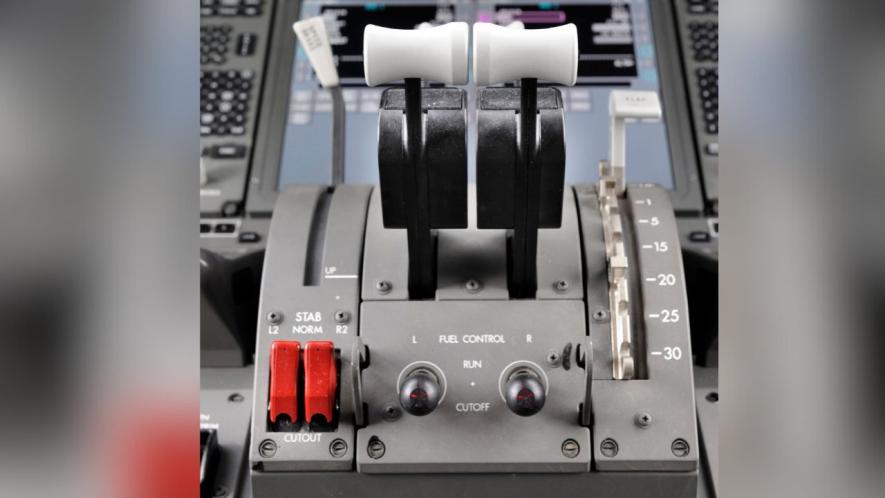
B787 Fuel Switches
The much awaited Preliminary Report (PR) of the investigation by the Aircraft Accident Investigation Bureau (AAIB) into the horrendous crash of Air India flight AI-171 at Ahmedabad on June 11, this year was finally released on July 11 night. This just met the one-month deadline norm set by the International Civil Aviation Organisation (ICAO, normally pronounced eye-kay-oh).
Besides other investigations, the PR is supposedly an initial assessment of clear and complete data downloaded from one of the aircraft’s two Enhanced Airborne Flight Recorders (EAFR) found in the wreckage. The EAFR contains all data on numerous flight parameters covering many earlier flights till the accident, and also contains the cockpit voice and other sound recordings, essentially combining the functions of a Cockpit Voice Recorder (CVR) and Flight Data Recorder (FDR).
Three aspects of the PR deserve close examination.
The PR records a few important findings, and quashes some speculative theories floating in the media. Whereas the PR is not expected to arrive at definitive conclusions regarding the cause of the accident, it is supposed to present available facts. However, the PR presents information selectively, hinting at causes, and omits important details in its possession.
Many questions raised are left unanswered. It is very unfortunate, indeed condemnable, that the PR points by innuendo to pilot error, always a convenient scapegoat in air accidents where both pilots are dead, allowing other actors to escape scrutiny. This has led to further despicable speculation in the media about “pilot suicide,” that is a pilot deliberately crashing the aircraft. Any such conclusion must be a last resort, after all other causes are eliminated. An examination of the facts and possible alternative explanations are attempted here.
Second, there has been much concern in international aviation circles about the delay in releasing the PR, and the unnecessary secrecy surrounding the investigations, when safety of aircraft and passengers demand maximum transparency enabling corrective action.
Finally, the handling of the entire investigation by the AAIB, acting more as a subservient government department than as an autonomous agency as expected by ICAO Annex 13, leads to suspicion of collusion between aircraft manufacturers, airlines and regulatory agencies, with government acting to provide a shield to these powerful interests.
It is noticeable that, while cautioning against speculation since the PR has not reached any conclusive findings, both Boeing and Air India have released statements that no mechanical or maintenance flaws have been found, which the PR does not say!
Regrettably, the AAIB’s PR fails on all three counts, and leaves the reputation of Indian aviation regulatory and safety bodies in tatters.
Immediate Cause
AAIB’s PR narrows down the immediate reason for the crash to dual engine failure which, although rare, has nevertheless seemed likely as per available facts and video recordings showing the behaviour of the aircraft from take-off until crash. Deployment of the Ram Air Turbine (RAT), visible under the fuselage during this last phase indicating total loss of power or electrical failure, flaps being extended and absence of fuel contamination are all confirmed by investigations reported in the PR.
The PR reveals that both engines appear to be losing power within a few seconds after take-off. The report notes that both fuel switches suddenly “transitioned” (a curious choice of words!) from the “RUN” to the “CUT-OFF” position. While this suggests cessation of fuel supply to the engines, no other supporting data is presented. It should be pointed out that these switches cannot be casually be flipped on or off. The placement and design of the fuel switches (see picture) calls for the hand to carefully avoid the guards on either side, pull up the switch over an obstacle, and then either turn or toggle it to ON or CUT-OFF positions, requiring purposeful multi-step actions.
The PR highlights the fuel switches as the most important finding of the investigation, and even hints at pre-meditated action by saying: “In the cockpit voice recording, one of the pilots is heard asking the other why did he cutoff. The other pilot responded that he did not do so.”
What triggered the question? What was said before and after? Why were the exact words not quoted, since the recording is available? Why was a full, or at least partial, transcript not included as commonly done in air accident investigations? Answers to these questions could have had a significant bearing on the events leading to the crash, but the PR leaves it at innuendo.
If the pilots are to blame, why has DGCA ordered all Indian carriers to inspect the fuel switches. And why have South Korea, Japan and Etihad Airways followed suit?
Many Unanswered Questions
Several other issues too are left crying out at least for some clarity, since the final report due at the earliest only in June 2026.
The PR gives details and timelines of some major events leading to the crash down to a second, but does not specify these for other significant events.
The PR shows that the aircraft lifting off at 13:38:39 IST, and Fuel Switches 1 and 2 transitioned from RUN (or ON) to CUT-OFF (or OFF) “immediately after,” no timeline given, “with a time gap of 01 sec.” This gap of one second gives rise to serious doubts. As described above, the switches cannot be simply flicked on or off by design.
As reputed safety experts have noted, that it would be physically almost impossible to complete the multiple steps required to toggle from ON to OFF first for one switch then the other, while also attending to the many other duties at take-off, all in one second. The PR does not clarify what the EAFR data shows regarding when actual fuel supply to the engines stopped, but refers only to the fuel switches, that too without timelines. This lack of clarity is crucial.
Similar doubts arise about deployment of the RAT and its timing. The PR notes that the RAT deploys “immediately after take-off,” but does not indicate whether this was automatic or done manually by the pilot which could throw light on whether the problem was fuel-related or electrics.
The PR is also completely silent, despite having cockpit sound recordings and the EAFR data, on whether any audio or visual alarms such as blinking red lights or beeps and aural warnings went off inside the cockpit as should happen in the B-787 when either engine lost power or as it approached crash. Any warnings would have conveyed much information, and even their absence would convey problems with electrical and sensors.
No comments from either pilot on the developing crisis are reported. However, several media outlets reported a pilot saying “No Thrust” or “No lift,” “Going down,” all within quotes but different from each other. Clearly a leak from inside the investigation, but with no mention in the PR.
These omissions and selective reporting in the PR, while claiming not to be drawing conclusions as to cause, are very serious lacunae.
Alternative Explanations
This has in turn led to insinuations, and even some direct accusations, of “pilot suicide.”
In the AI-171 crash, there are at least three alternative explanations that point to design flaws or performance issues in the Boeing 787-8 aircraft and its General Electric GEnx-1B engine.
First, senior pilots have spoken about a problematic “MN4” microprocessor in the GEnx engine’s Electronic Control Unit (ECU), essentially the brains of the engine which controls various performance parameters mostly in automatic mode without need for pilot intervention.
A Service Bulletin (FAA-2021-0273-0013) issued in 2021 at the joint instance of Boeing and GE by the Federal Aviation Administration (FAA), the US certification, safety and regulatory authority, called for replacement of the MN4 microprocessor due to a particular problem. Not getting too technical, the processor is mounted on a board containing solder balls which may deteriorate with age and result in loss of contact and false signals to different systems. In some circumstances, false signals such as whether the aircraft is on the ground or airborne could even lead to switching off of fuel supply to the engine.
The second possibility concerns the Ground/Air sensor and the Weight-on-Wheels (WOW) sensors and different control systems linking these to the Full Authority Digital Engine Control (FADEC) system which guides the engine towards autonomous operation.
The PR says the sensor went from ground to air at take-off. The fuel switches went from Run to Cut-off two seconds later. However, if a false signal was sent to FADEC, say due to malfunctioning of other control system elements as has happened on B787s before, leading it to wrongly believe the aircraft was still on the ground, it could have shut off fuel supply by-passing the cockpit fuel switches. That is why the PR should have also recorded what different EAFR data tell us rather than relying solely on the position of fuel switches in the cockpit, and also recorded timelines more accurately.
The WOW sensor, which also controls landing gear and other functions, is another one where false signals have caused problems earlier, notably in an incident involving a Japanese ANA airline mishap in 2019. There the aircraft switched on fuel supply and restarted the engine on the ground by-passing the pilots: on AI-171 this kind of error could have happened by switching off fuel in the air with fatal consequences.
All these cases could also validate what the pilots did in AI-171. They may have recycled the fuel switches, that is, they first switched them off, and then switched them back on to get fuel supply restarted, just like computer or smart phone users are advised to do when the machine hangs. That it took them just 14 seconds total till both engines re-started, unfortunately too late, is commendable considering everything else that must have been going on in the cockpit.
No part of this air accident inquiry has reflected well on Indian aviation authorities, and especially the government, which tried at the outset to supersede the AAIB but stayed back after backlash. However, even now, the heavy hand of the government, heavily predisposed toward secrecy and information “management,” are evident.
Air India, too, and other Indian carriers, have much to do to improve their performance as regards aviation safety. DGCA needs to grow a spine and ensure air safety gets precedence over commercial or political interests. In absence of decisive measures, the image of India as a “Third World aviation nation” instead of the world’s fastest growing aviation market will persist.
The writer is a qualified aeronautical engineer and is associated with the Delhi Science Forum and All India People’s Science Network. The views are personal.
Get the latest reports & analysis with people's perspective on Protests, movements & deep analytical videos, discussions of the current affairs in your Telegram app. Subscribe to NewsClick's Telegram channel & get Real-Time updates on stories, as they get published on our website.










